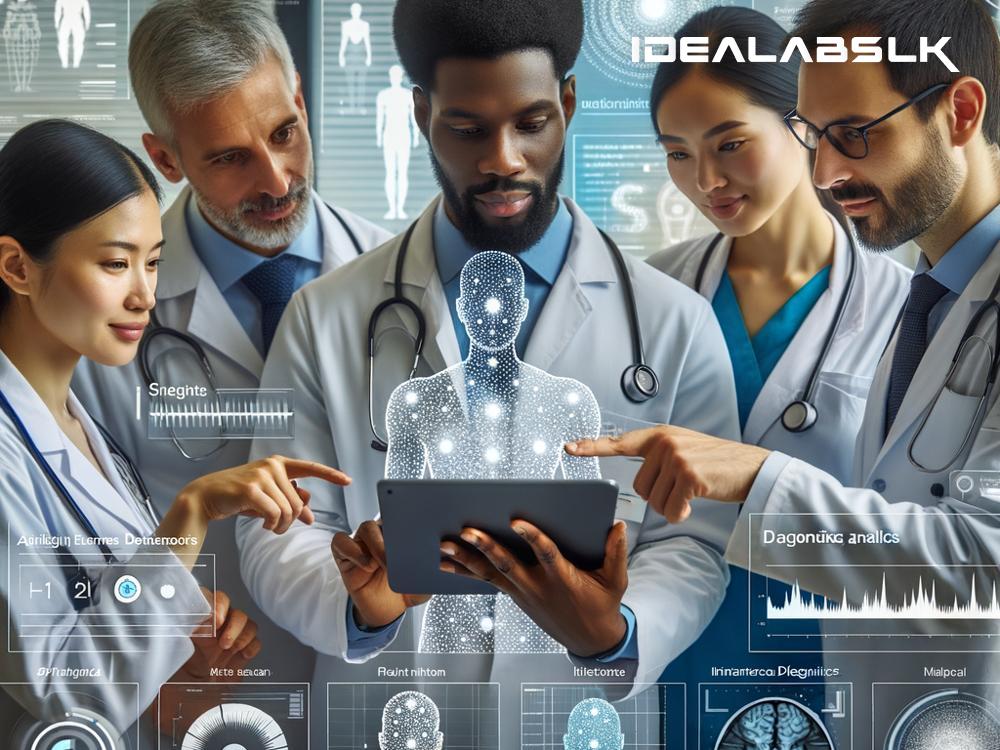Title: AI and Machine Learning in Diagnostics: Speeding Up Doctor's Decisions
In the world of medicine, every second counts. When doctors are trying to diagnose what's wrong with a patient, the faster they can figure it out, the better. This is where Artificial Intelligence (AI) and Machine Learning (ML) are starting to play a big role. They're like superheroes for doctors, giving them the extra powers they need to make quick and accurate decisions. Let's dive into how this technology is changing the game in diagnostics.
What are AI and Machine Learning?
To put it simply, AI is a broad area of computer science that focuses on creating smart machines capable of performing tasks that typically require human intelligence. Machine Learning is a subset of AI and involves computers learning from data to improve their accuracy over time without being explicitly programmed to do so.
The Impact on Diagnostics
In the medical field, diagnostics is all about identifying what illness or disease a patient has, based on their symptoms and test results. This can sometimes be like looking for a needle in a haystack. AI and ML are becoming invaluable tools for doctors in this process by:
-
Analyzing Data Quickly: These technologies can go through vast amounts of data—like medical records, research, and test results—in seconds. What could take humans hours or even days to analyze, AI can handle in a blink of an eye.
-
Recognizing Patterns: ML algorithms improve over time by learning from the data they're exposed to. They can detect patterns and correlations that might not be obvious to human eyes. This means they can help in diagnosing diseases that are difficult to spot until it's often too late, such as certain cancers.
-
Enhancing Imaging Techniques: In radiology, AI is being used to interpret X-rays, MRIs, and other imaging results faster and sometimes even more accurately than a human can. This quick interpretation can speed up the time it takes to diagnose a patient's condition.
-
Predicting Outcomes: AI can also help predict the likely progression of a patient's disease. This is crucial in planning the right treatment approach early on and can drastically influence the patient's chances of recovery.
Real-World Examples
One of the most noted applications of AI in diagnostics has been in the field of oncology, particularly in the early detection of breast cancer. Algorithms have been developed that can spot nuances in mammograms that might be missed by human eyes, significantly increasing early detection rates.
Another example is Google’s DeepMind which has developed an AI system to diagnose eye diseases by analyzing 3D scans of the eye. It's able to automatically detect over 50 eye conditions with high accuracy. This not only speeds up the diagnosis process but also makes it more reliable.
The Benefits
The benefits of using AI and ML in diagnostics are clear:
-
Speed: Diagnoses can be made much more quickly, allowing for treatment to start sooner.
-
Accuracy: The precision of AI can reduce the number of misdiagnoses, meaning patients get the right treatment for their condition.
-
Efficiency: It can alleviate the workload on healthcare professionals, allowing them to focus more on patient care rather than sifting through data.
The Challenges
However, integrating AI and ML into the healthcare system isn't without its challenges. There are concerns about privacy and security of patient data, the need for significant investment in technology and training, and the skepticism from some in the medical field about relying too much on machines for diagnoses.
Looking Ahead
Despite these challenges, the potential of AI and ML in diagnostics is undeniable. As technology continues to advance, we can only expect its role in healthcare to grow. One thing is sure – AI and ML are making diagnostics faster, more accurate, and ultimately saving lives. And as we look towards the future, we may just be scratching the surface of what these technologies can do to revolutionize healthcare.
In conclusion, AI and ML are not replacing doctors but equipping them with powerful tools to make faster, more informed decisions. It's an exciting time for medical diagnostics, with technology opening new doors to how we approach and understand healthcare. As these technologies continue to evolve and integrate into the medical field, the future of diagnostics looks brighter and much more efficient.

